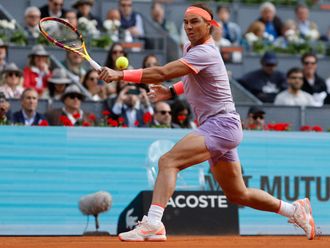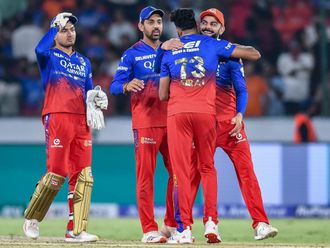Not being a golfer makes it hard for me to fathom what makes a few of my friends tick, especially since there is a striking resonance amongst them when it comes to discussing golf.
Are they addicts? The description might fit for lack of a stronger phrase. I haven't become a golfer as yet (and I am not going to apologise for it), though I have lost good friends to the game. I am not alone: a few wives have lost their husbands to the greens as well.
The great golfing debates in the clubhouses, or worse still, in the middle of a social gathering, can range from equipment; the day's best score (everyone likes to brag about that, especially the handicap cheats!); the damaged swing that has been perfected at a top dollar clinic; on why so-and-so just can't drive, or putt, and sometimes an analysis of how approachable the game is to people living in the UAE.
In this context, I was witness to a debate which hinged on the premise that golf in the UAE had plenty of swing but no drive. It was being argued that if the golfing fraternity took time out to reflect on the state of the game they would be faced with more questions than answers.
Two factors were debated: the influx of international golfers, which does not seem to be registering an upward trend and green fees which are not the cheapest in the world.
Are the two linked? The answer is maybe.
Desert Swing
Locally, golf has been bringing home a healthy report card: the ‘Desert Swing' — the Abu Dhabi Golf Championships, Qatar Open and Dubai Desert Classic — which concludes with the Dubai Desert Classic, has brought the game and its players virtually at the doorstep of local golf lovers.
Rounds of golf being played by members and local visitors are registering a healthy trend and golf courses that were once announced are now completed, or on the verge of being so. The local golfing industry has taken tremendous strides forward. The game's soaring popularity even sent real estate developers once scrambling to build golfing real estate across the emirates.
The years 2008, 2009 and 2010 then saw a ‘double whammy'. A global recession had individuals resorting to discretionary spend to such a degree that they became cautious and possibly reserved in committing to club memberships, or the weekend green fee. The second change which coincided was the sudden increase in facilities within the country in short, a greater number of golf holes at a time when less people were spending, or had time to play.
Membership fees
Question time: Is the international reduction blamed on price or accessibility? The answer is perhaps both. Green fee golf in the UAE is amongst the most expensive in the world though clubs will argue that there is a high quality of service. But from what I am now given to understand is that even if international traffic is down there is good news for local golfers: membership fees are down as are pay and play rates.
If the industry here is to thrive in the short and long term then initiatives must be taken to attract three categories of golfers — members, visitors and international visitors. This essentially means that three principal stakeholders need to talk to each other: the golf clubs, hotel industry and the airline industry.
If the industry as a whole is to thrive, then more and more initiatives must be taken to attract the players. Golf has come a long way since its inception in the UAE but the industry now finds itself at a crossroads. I can't wait to be a witness to the next debate to see if the game has acted on its current and future tests.








